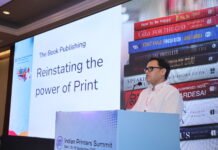On 19 January 2018, Apple announced its entry to the digital textbook market at an event at the Guggenheim Museum in New York. However, the reception by tech watchers is not enthusiastic who say that the company’s new build-your-own-textbook tool will lead to further fragmentation of an already crowded market.
Speaking at the event on behalf of Apple, the company’s senior vice president of worldwide marketing, Philip Schiller, said that Apple was “reinventing the textbook.” Aiming at the high school market initially, the company’s executives pointed to the higher education market too. Apple talked about its iBooks Author, a free book-making software that lets anyone build a rich-media textbook for the iPad. Authors can drag and drop images from iPhoto libraries, video clips from iTunes, and slides from Apple’s Keynote.
The book-building software or app runs on Macs only with output only for iPads and not on Android, which should be a huge disincentive in most parts of the real world outside California. Apple is a latecomer to the eTextbook market but publishers such as McGraw-Hill, Pearson, and Houghton Mifflin Harcourt took part in the event although they have as yet only made a few of their titles available for the new Apple iBooks2 app. Publishers did comment on the slick look of the new platform.
Apple also announced its first major upgrade to its iTunesU service, which has been available for 4 years and which makes it easier for teachers to use its free multimedia service as a course-management system that places the syllabi, lecture videos and podcasts together with the relevant textbooks inside a virtual folder for uploading to iTunes or downloading to an iPad.

















